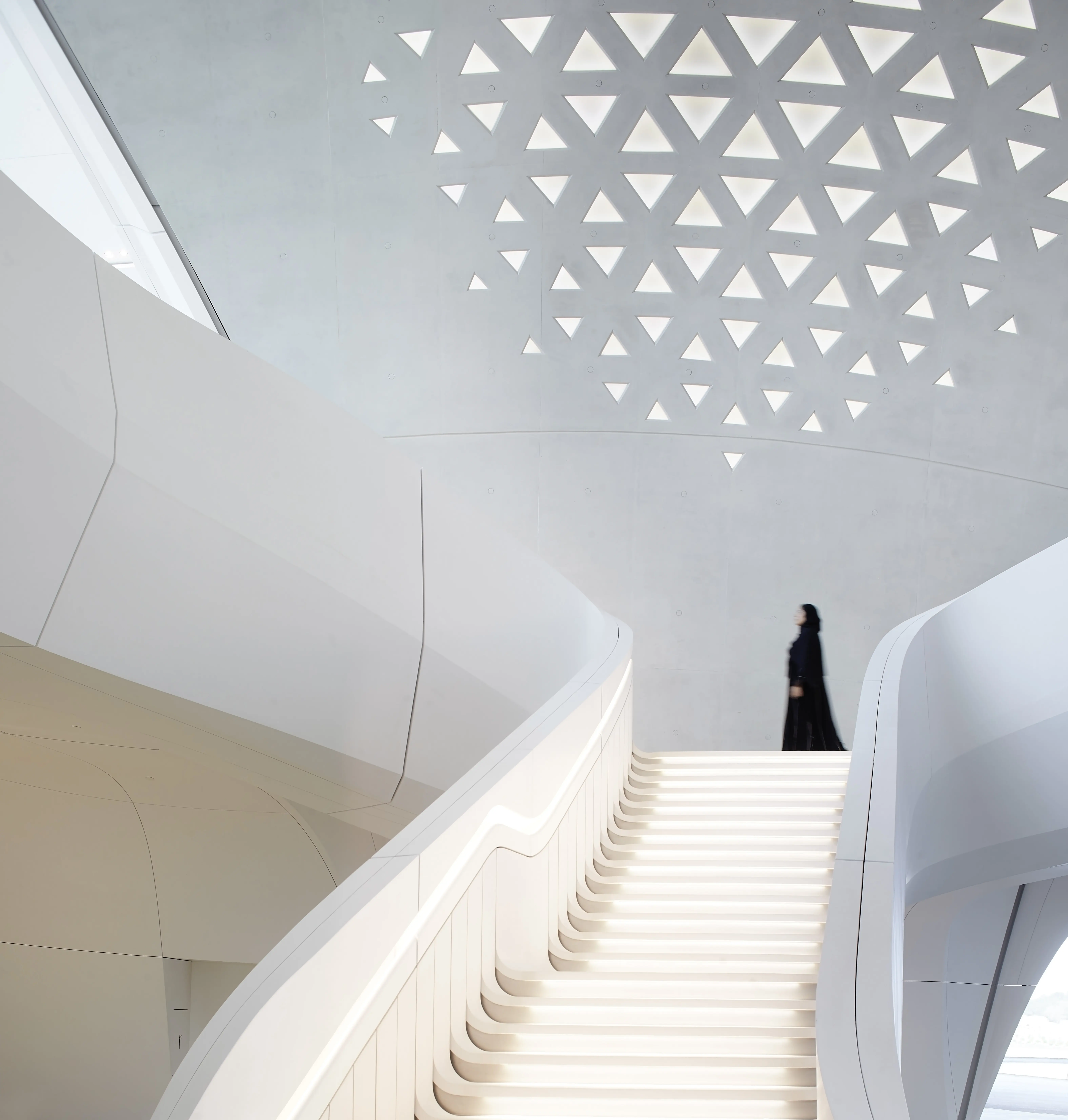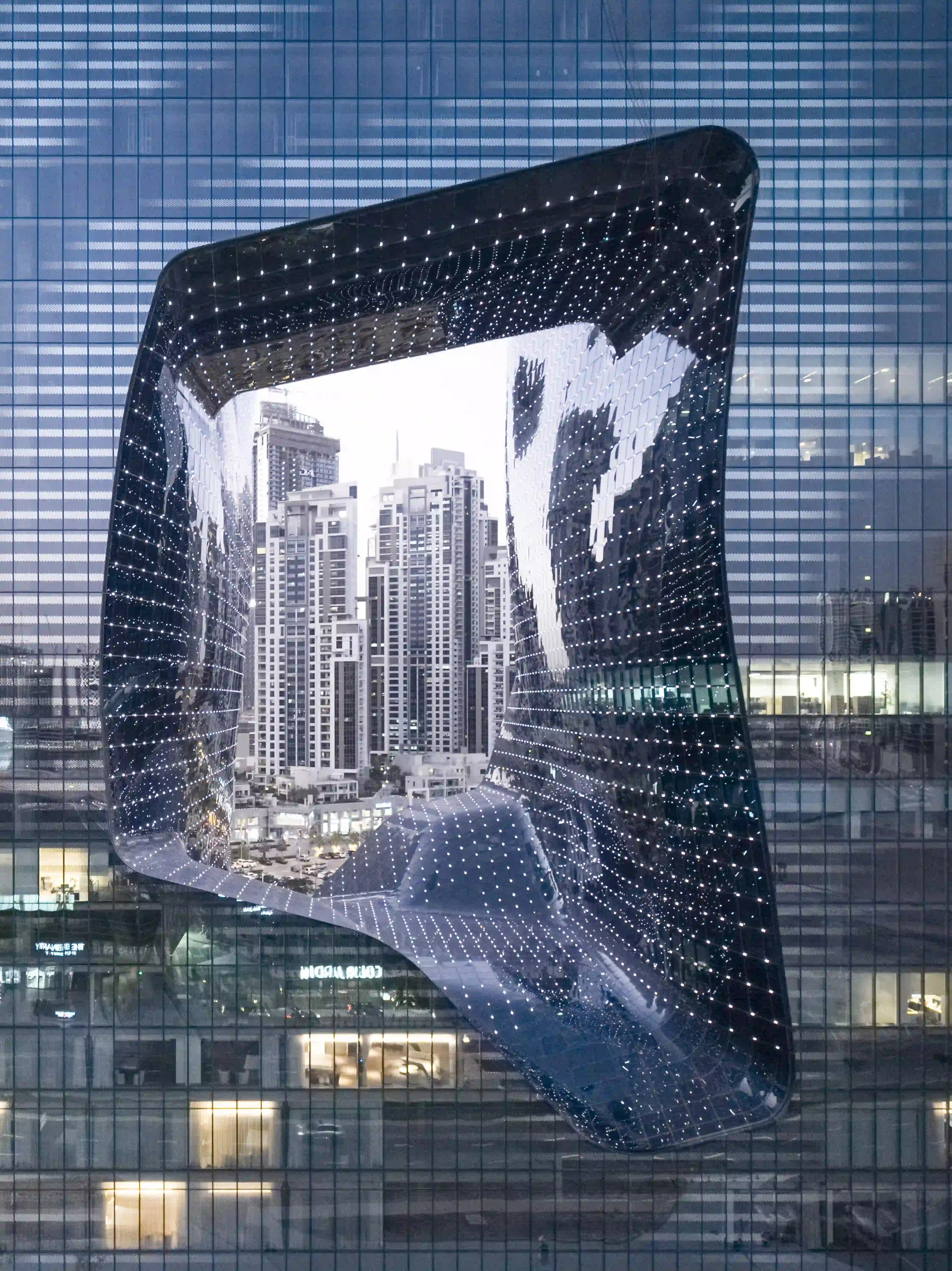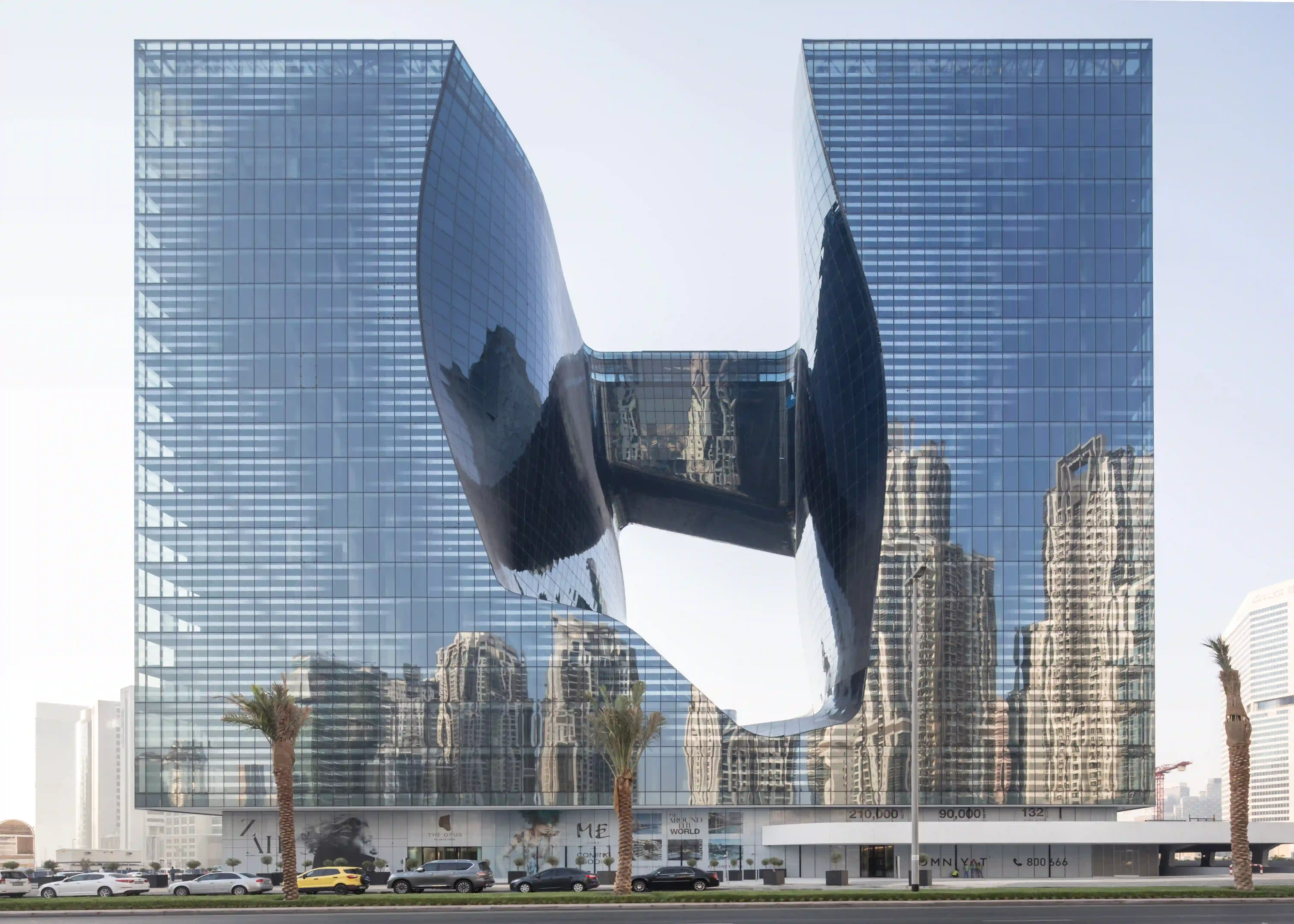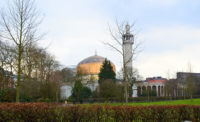After Zaha Hadid won the Pritzker Prize in 2004, the Arab world gradually opened up to its native daughter—and from 2010 until her death in 2016, the commissions that had been conspicuous by their absence on her home ground accelerated, from Morocco to the Gulf to her birthplace, Iraq. In a sad irony, she never saw the Arab projects she worked on. Several have been finished recently.
During a long weekend in late November, about two-thirds of the 550-member staff of Zaha Hadid Architects (ZHA) converged in the United Arab Emirates (UAE) for a celebration of two of the buildings and a park completed after Hadid's death. Signaling the growing success of the London-based firm, architects at ZHA took advantage of a £500-pound office stipend to make the trip. The quality of the designs reminded the architects why they had signed up to work for this legendary figure and her legacy firm.
The first project the staff celebrated was the new headquarters of BEEAH, a group handling waste management, clean energy, and environmental consulting in Sharjah, one of the seven UAE emirates. In the 2015 competition, the local emir was so impressed by Hadid’s design—its flowing forms seemed to emerge from the desert, and return there, amid dunes, ponds, and desert landscaping—that he wanted to skip seeing other proposals, according to one architect presenting the scheme.

BEEAH Headquarters, Sharjah. Photo © Hufton+Crow
As the ZHA staff disembarked from chartered buses into a sinuous landscape of built dunes, they saw at full scale the variably curved shell structures of enormous plasticity and expressive shape designed with advanced software. The lead project director was Sara Sheikh Akbari. Like the desert around it, the dunes of the building seem frozen in movement. The devilishly difficult compound curves, fabricated in glass fiber- reinforced concrete, were produced in Sharjah itself. (The same cladding fabricator Arabian Profile, has exported structural elements overseas to other ZHA projects in Miami and Azerbaijan.) Trained as an architect, the company’s owner, Harold Halvorsen, had worked directly with Hadid, whom he fondly refers to as “her royal highness.”
Under the shade of a porte-cochere, the ZHA architects entered the reception area of BEEAH Headquarters, vaulted by a voluminous two-story dome spotted with a constellation of apertures admitting light. To the left, lay an auditorium and, beyond, a canteen with a ribbed wood ceiling leading to a long open-plan office area with walls following the contours of the meandering exterior. In the reception area, a curving staircase—itself worth a scene in a movie—led to the directors’ suites and conference rooms, featuring bespoke wooden built-ins that bring the fluidity of the shell down to the tactile level of furniture: wall becomes desk.
Back outside, the curvilinear geometries ripple into the parking lot and landscaping beyond with the fluidity of converging and diverging streams. The roofscape of ridges and swales beckons like a skateboard park.

The Opus, Dubai. Photo © Laurian Ghinitoiu
The second building of the weekend was the 940,000 square foot Opus, the first commercial structure designed by Hadid—in 2007—and opened in 2020 in the early months of the COVID pandemic. A mixed-use mid-rise tower in the heart of Dubai near the Burj Khalifa, it includes a 96-room hotel on the first four levels of the structure, with organically-contoured open balconies ringing a voluminous atrium. Offices and apartments are located above in two glass towers that flank a giant, 20-story high opening. A three-story bridge of apartments spans the two towers, forming a doughnut whose contoured hole is a woozy topography of warped glass planes that wrap the void at the center. With its crisp corners, the perfectly squared cube of the overall form contrasts with the molten contours of the void.
After it was designed as a hybrid office and condominium project, Opus ran into the financial gales of 2008 and the program shifted to include the large hotel. It was further stalled by the zoning for the site, which required a podium with multiple floors of parking. Hadid insisted that the parking be buried, a position that developer Mahdi Amjad succeeded in getting approved by the city. The void in the vitreous doughnut distinguishes Opus from all the surrounding point towers, challenging the typology with another approach to high density.
Hadid herself, working with project architect Christos Passas, also pushed for last-minute “necessary” changes, such as what she called a “magic carpet:” a shelf-like component extending beyond the base of the block to form a visual contrapposto to the cubic mass. The developer turned the idea to his advantage, appending several restaurants next to the resulting terrace and pool. “I realized the change was for the better,” said Amjad, who also noted that the distinctive design has commanded above market prices and rents.
If BEEAH responded to its desert context, Opus presented an equally innovative response to its urban surroundings. Dubai, despite all the hype, is a hostile urban environment, friendlier to automobiles than to people and shaped by a dependency on high-speed roadways and on air conditioning in both cars and buildings. By eliminating the parking podium, Hadid and Passas established a direct relationship between the street, the user, and the building by locating the entrance lobby on the ground floor, not several floors up.

The Opus, Dubai Photo © Laurian Ghinitoiu
In Dubai, that seemingly minor move mitigates—at least in this one building—the pervasive anomie of dehumanized urbanism. Anyone arriving at the hotel by taxi can walk straight into the reception area from the street. Here, a friendly, organically-shaped front desk is near the door, not in a proscenium configuration that forms a barrier between staff and guest. A welcoming coffee kiosk stands opposite the entry: you can just ease into a Hadid-designed, kidney-shaped sofa with a latte and a panini. The simplicity of the plan humanizes the experience and makes a direct connection between outside and inside, guest and hotel, as though the building were shaking hands with the street.
Interior balconies leading to rooms line the atrium, as in a Portman hotel, with a ceiling that forms the base of the doughnut hole between the flanking towers above. Hadid designed both the building and its interiors, down to the built-in desks, beds of the guest rooms, and even the bathroom fixtures: it’s a gesamtkunstwerk rare for a commercial structure.
The last venue for the ZHA staff weekend was back in Sharjah, where hundreds of the architects convened for cocktails and a group chat at the end of the day in the newly-opened Aljada Discovery Center. ZHA won the competition in 2018—after Hadid’s death—to design a landscaped leisure and entertainment park with loosely conjoined recreational and educational structures and outdoor spaces that allow year-round occupancy despite Sharjah’s extreme heat. In a country where cavernous shopping centers constitute what passes as the public realm, the Discovery Center offers rare public space that is not privatized, with the unusual goal in this oil-exporting country of using design to foster a nature-driven ecosystem. According to ZHA project architect Johannes Schafelner, the design uses the image of drops of water raining on the site to organize the block into pools of architecture and pools of outdoor space within a rippling landscape where the elliptically shaped buildings will channel breezes throughout the outdoor spaces. The mostly glass pavilions (only two have been built so far) have deep overhangs and expansive canopies that create shaded spaces for outdoor comfort.
_result2.webp)
The Aljada Discovery Center features outdoor recreational spaces open to the public. Photo © Luke Hayes
Besides celebrating the buildings, the office-wide retreat implicitly celebrated the firm itself. When Hadid died nearly seven years ago, ZHA's continuing success was not assured. The three projects in the UAE and the enthusiastic presence there of so many staff architects seemed to affirm the company’s past, present, and future. It also affirmed the transition of Hadid’s original boutique operation—which she launched in 1983— into a major firm that continues, at varied scales, the spirit of research and invention on which the founder based her practice.
Last November, the staff of Zaha Hadid Architects visited a trio of UAE projects completed after Hadid’s passing, including the dune-like Sharjah headquarters for environmental service company BEEAH. Video courtesy of BEEAH

_result2.webp?t=1674156411&width=1080)


_result2.webp?t=1674156369&width=1080)


Post a comment to this article
Report Abusive Comment